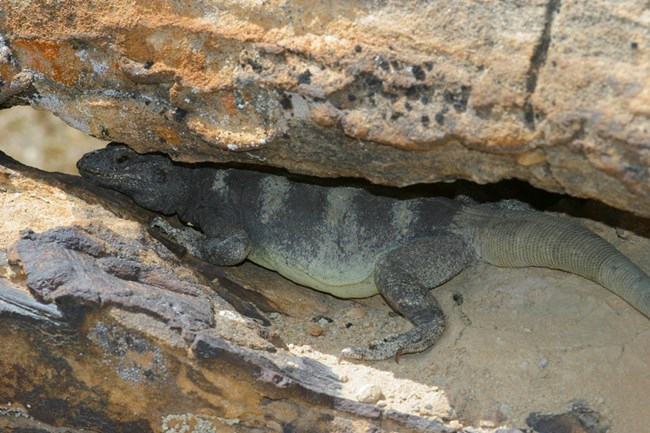
Red Cliffs Desert Reserve/ Cameron Rogan While a male chuckwalla does not mind if a female enters their territory, when there is an abundance of resources male chuckwallas may create a hierarchy with smaller males. The males may exhibit actions such as “push-ups”, head-bobbing, gaping their mouth, and as a last resort, fighting as a sign of aggression toward other males. Mating season for the chuckwalla is generally May-June however, not every mature female mates every year. Those that do mate will lay a clutch of 5-10 eggs in a nest hidden away from predators. Once the eggs are laid, the female will leave the nest and after a month of isolation the new hatchlings will fend for themselves. The chuckwalla prefers to live in areas with large boulders such as a lava field near an open flat. They are primarily herbivores and eat creosote bush, as well as leaves, buds, flowers and fruits. When resources are abundant the lizard is able to store water in lymph sacs beneath folds of skin on the sides of its body and in its fattening tail. This stored energy will be use during a time when food and water are not so plentiful. When there is little vegetation for the reptile to eat, it may resort to eating insects. If a threat arises the lizard will seek shelter in a rocky crevice. Once inside it will wedge itself in by inflating its lungs, making it virtually impossible for a predator to get out. When the predator no longer seems to be a threat the lizard will deflate its lungs and emerge from the shelter. |
Last updated: February 8, 2019
